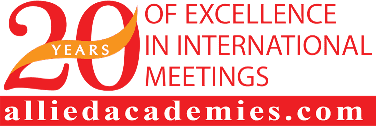


Submit your abstract to any of the mentioned tracks. All related abstracts are accepted.
Register now for the conference by choosing an appropriate package suitable to you.
All accepted abstracts will be published in respective Allied Academies Journals.
Abstracts will be provided with Digital Object Identifier by
